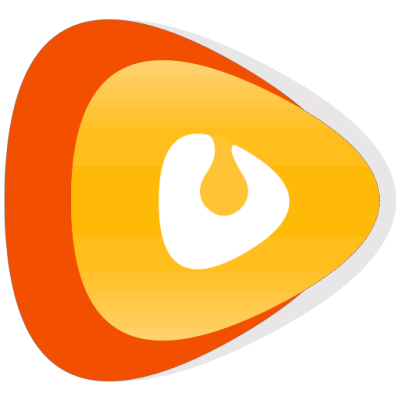Description

JW Player

Mogi I/O
Comprehensive Overview: JW Player vs Mogi I/O
JW Player and Mogi I/O are both companies that operate in the digital video technology space, and they offer distinct services tailored to different aspects of video content delivery.
JW Player
a) Primary Functions and Target Markets:
-
Primary Functions: JW Player is a video platform offering tools for video hosting, streaming, and management. Its services include a highly customizable HTML5 video player, a video hosting solution, an ad management suite, and analytics tools. Their technology supports high-definition video streaming, reduces buffering, and allows for adaptive streaming.
-
Target Markets: JW Player primarily targets media companies, broadcasters, content creators, publishers, and businesses that rely heavily on video content. It serves industries like news, entertainment, sports, and marketing.
b) Market Share and User Base:
- Overall Market Share and User Base: JW Player is one of the more established names in the online video platform industry, competing with the likes of Brightcove and Kaltura. While it doesn't disclose exact numbers, JW Player claims to power a significant portion of the world's video watching, with a reach extending to more than 2 billion unique devices per month.
c) Key Differentiating Factors:
- Customization and Flexibility: JW Player is known for its highly customizable video player, allowing businesses to tailor the viewing experience to align with their brand.
- Advertising and Monetization: The platform has robust advertising integrations that enable efficient monetization of video content through ad networks and direct sales.
- Scalability: JW Player offers solutions that cater to both small publishers and large enterprises, providing scalable infrastructure that adapts to various business sizes.
Mogi I/O
a) Primary Functions and Target Markets:
-
Primary Functions: Mogi I/O provides a cloud-based video processing SaaS platform that focuses on transcoding, hosting, and streaming video content. They emphasize speed and efficiency in video processing and offer ultra-low latency streaming capabilities.
-
Target Markets: Mogi I/O targets businesses in sectors like entertainment, media, education, and live events. They also appeal to tech companies requiring video streaming as part of their service offering.
b) Market Share and User Base:
- Overall Market Share and User Base: Mogi I/O is a relatively newer player compared to JW Player and does not command the same brand recognition or market share. Their focus on specific niches and technology-driven companies has helped them carve out a space in their target markets, though detailed user base statistics are not widely published.
c) Key Differentiating Factors:
- Ultra-Low Latency Streaming: Mogi I/O is particularly noted for its low-latency streaming capabilities, which is crucial for live sports and event broadcasts.
- Innovative Technology: With a strong emphasis on technology, Mogi I/O offers advanced features like AI-based transcoding and efficient bandwidth usage, which can be advantageous for tech-savvy clients.
- Focus on Processing Efficiency: Their platform is designed to handle large volumes of data with speed, providing an edge for clients who require real-time video processing.
Comparative Overview
When comparing JW Player and Mogi I/O, the key differences lie in their market positioning and feature focus. JW Player's established market presence, high degree of customization, and advertising capabilities make it suitable for traditional media and large enterprises. In contrast, Mogi I/O's cutting-edge low-latency streaming and processing efficiency appeal to companies seeking innovative technology solutions for live and interactive video content.
Contact Info

Year founded :
2004
Not Available
Not Available
United States
Not Available

Year founded :
2018
+91 98183 99142
Not Available
India
Not Available
Feature Similarity Breakdown: JW Player, Mogi I/O
As of my last update, both JW Player and Mogi I/O are digital video platforms or services that cater to delivering and managing video content, though their primary focus can be different. Below is a feature similarity breakdown for both:
a) Core Features in Common
-
Video Hosting and Delivery:
- Both platforms likely provide features for hosting video content and ensuring efficient delivery across different devices and networks.
-
Adaptive Bitrate Streaming:
- They support adaptive bitrate streaming, allowing video quality to adjust dynamically based on the viewer's internet connection speed.
-
Analytics and Reporting:
- Both offer analytics dashboards for tracking viewer engagement, performance metrics, and insights for optimizing video content strategy.
-
Content Security:
- DRM (Digital Rights Management) and security features like encryption and geo-blocking may be supported to protect content against unauthorized access.
-
API Integration:
- Each platform typically provides APIs that allow developers to integrate video capabilities into their applications or services easily.
-
Player Customization:
- Customizable video player options are usually available, allowing users to modify the look and feel according to their branding needs.
b) User Interface Comparison
-
JW Player:
- JW Player traditionally offers a clean and user-friendly interface focusing on ease of use. It often highlights quick access to video upload tools, player customization settings, and analytics dashboards. The interface is designed to cater to users with varying levels of technical expertise with intuitive navigation.
-
Mogi I/O:
- Mogi I/O might have a more straightforward interface especially if it’s designed to appeal to broadcasters or more B2B-focused clients. The interface would likely emphasize efficiency and ease of managing large video libraries and complex streaming setups.
c) Unique Features
-
JW Player:
- Advertising and Monetization: JW Player excels in video monetization features, offering advanced advertising integrations, ad scheduling, and real-time bidding through its partnerships with major ad networks and exchanges.
- Extensive Ecosystem Support: It can often boast a more extensive range of integrations and supported platforms, making it highly suitable for publishers looking to reach a wide audience.
-
Mogi I/O:
- AI and Automation: Mogi I/O might incorporate more automation in content delivery and offer innovative solutions like AI-driven recommendations or optimizations that cater to specific business needs.
- Enterprise-Level Features: It could present unique enterprise solutions like OTT (Over-the-Top) service functionalities, highly tailored for specific sectors such as live sports or international media distributions.
This comparison is subject to change as new features get released and platforms evolve. It is always advisable to consult the latest documentation or directly contact sales or technical support of the respective companies for the most current information.
Features

Not Available

Not Available
Best Fit Use Cases: JW Player, Mogi I/O
JW Player and Mogi I/O are both prominent solutions in the video platform and streaming space, but they cater to different needs and use cases. Here's a breakdown of their best fit use cases:
JW Player:
a) For what types of businesses or projects is JW Player the best choice?
- Media and Publishing Companies: JW Player is ideal for media companies looking to improve their video delivery performance and monetize their content. Its robust analytics and ad integration make it perfect for media outlets that depend on advertising revenue.
- Enterprises with Large Video Libraries: Businesses with extensive video archives can benefit from JW Player's scalable and reliable streaming infrastructure.
- E-learning Platforms: Educational tech companies can use JW Player for course videos, offering a seamless playback experience and integration with LMS (Learning Management Systems).
- Entertainment and Sports: Companies focusing on entertainment or sports can capitalize on JW Player's high-quality video streaming and real-time analytics to engage viewers.
d) How does JW Player cater to different industry verticals or company sizes?
- Verticals: JW Player supports a range of verticals including media, education, and enterprise, with features tailored to support monetization, such as ad networks integration and analytics.
- Company Size: It caters to both large enterprises and medium-sized businesses by offering scalable solutions that can be customized to meet complex demands while still being accessible to smaller teams with comprehensive tools and documentation for ease of use.
Mogi I/O:
b) In what scenarios would Mogi I/O be the preferred option?
- OTT Platforms: Mogi I/O is ideal for companies launching or operating Over-the-Top (OTT) video services, offering low-latency streaming and highly reliable delivery.
- Startups and Companies in Growth Phase: Its flexibility and cost-effectiveness make it suitable for smaller companies or startups that need to scale quickly without significant investment in infrastructure.
- Localized Streaming Services: For businesses focusing on regional or niche markets, Mogi I/O provides solutions optimized for fast deployment and localized content delivery.
- Live Event Streaming: Mogi I/O can be the go-to choice for companies that host live events and require robust solutions to manage sudden spikes in traffic.
d) How does Mogi I/O cater to different industry verticals or company sizes?
- Verticals: Mogi I/O services industries like entertainment, corporate streaming, live events, and OTT services, with a focus on providing seamless and low-latency streaming experiences.
- Company Size: Mogi I/O is highly accessible for startups and mid-sized businesses due to its flexible pricing and scalability, while also being able to support larger enterprises with custom solutions and advanced features.
In summary, JW Player is generally well-suited for established media entities and enterprises with a strong focus on monetization and analytics, while Mogi I/O offers flexibility and cost-effective solutions for OTT platforms, startups, and live event streaming. Each platform serves its audience by focusing on specific industry needs and providing scalable services to accommodate different company sizes.
Pricing

Pricing Not Available

Pricing Not Available
Metrics History
Metrics History
Comparing undefined across companies
Conclusion & Final Verdict: JW Player vs Mogi I/O
To provide a conclusion and final verdict on JW Player and Mogi I/O, it's essential to analyze various aspects of each product and offer insights into their respective pros and cons, as well as specific recommendations for potential users.
Conclusion and Final Verdict:
a) Best Overall Value:
The decision on which product offers the best overall value between JW Player and Mogi I/O depends largely on the specific needs and objectives of the user. JW Player is known for its robust feature set and wide market adoption, making it an excellent choice for businesses looking for a comprehensive video delivery platform. On the other hand, Mogi I/O is emerging with innovative approaches, particularly in video streaming and artificial intelligence, which might appeal to tech-forward companies and startups seeking cutting-edge solutions.
b) Pros and Cons:
JW Player:
Pros:
- Established Reputation: JW Player has a long-standing presence in the industry, ensuring reliability and mature product features.
- Wide Range of Features: It offers advanced functionalities like DRM support, seamless integration with advertising platforms, and detailed analytics.
- Scalability: Excellent for businesses of all sizes, from small startups to large enterprises.
Cons:
- Pricing: Can be expensive, especially for smaller companies or individuals with tight budgets.
- Complexity: The vast feature set might be overwhelming for users who need simpler solutions.
Mogi I/O:
Pros:
- Innovative Technology: Focuses on AI-driven solutions and efficient video streaming, which can offer a competitive edge in cutting-edge applications.
- Cost-Effective: Potentially more budget-friendly, making it attractive to startups or smaller enterprises.
- Agility: Being a newer player, it might be more adaptable to user feedback and quicker in implementing new features.
Cons:
- Less Established: As a newer entrant, it may not have the same level of market trust or stability as more established players like JW Player.
- Feature Gaps: May lack some advanced features or ecosystem integrations that JW Player offers, depending on the specific requirements.
c) Recommendations:
For users deciding between JW Player and Mogi I/O, the following recommendations can help guide the choice:
-
Assess Needs: Determine the critical requirements for your video delivery strategy. If you require comprehensive, reliable, and industry-standard features, JW Player might be the better choice. However, if innovation, cost-effectiveness, and AI capabilities are your focus, consider Mogi I/O.
-
Budget Considerations: Evaluate your budget constraints. If cost is a significant factor and you are a smaller operation, Mogi I/O could provide a more accessible entry point.
-
Trial and Feedback: Take advantage of trial versions or demos offered by both platforms. Evaluate the usability and performance under real-world conditions, and seek feedback from current users whenever possible.
-
Future Needs: Consider the scalability and adaptability of each platform in line with your projected growth and technological advancements in your industry.
In conclusion, both JW Player and Mogi I/O have their distinct advantages. The "best" choice will depend on matching your organization's specific needs and goals with the strengths of each platform.
Add to compare
Add similar companies




